Physical Address
304 North Cardinal St.
Dorchester Center, MA 02124
The experience of general surgery residents with major, open surgical procedures is low compared with historical norms and continues to decline. Many reasons for this have been adduced, including a decrease in resident training hours, nonoperative management of many trauma patients, decreased societal violence, and the dominance of minimally invasive and endovascular techniques to treat conditions formerly requiring open operations. It is probable that the well-documented lack of resident experience with complex, open operations for vascular and truncal trauma has resulted in reduced operative capability among graduating residents.
The lack of open trauma surgery skills among young surgeons compounds a readiness problem for the U.S. military medical system. Most operations required for the management of combat trauma are open surgical procedures. The military forces of the United States are having difficulties retaining surgeons, including those who have any meaningful trauma credentials, because of low operative volumes in most military hospitals. The clinical practice of most military surgeons in peacetime is deficient in combat-relevant trauma surgery experience. There is concern that the historically low case fatality rates among casualties who reached surgical facilities in the conflicts of the last two decades may not be equaled in the event of a future war against a near-peer adversary over a dispersed battlefield, in which evacuation times are prolonged. These factors have led to the recognition of an operational need to improve the trauma surgery training of available military surgical personnel in order to sustain force readiness.
The precise training required to produce combat surgeons who have a provable—rather than a presumed—level of proficiency for combat casualty management remains an unsettled question. Surgeons deployed in support of prior conflicts have often been required to perform procedures for which they had not been trained or for which their skills had degraded since their formal training. Errors made by these inexperienced surgeons resulted in many unnecessary deaths, as well as much suffering, disability, and expense. There is currently no standardized requirement for special trauma training that must be provided to deploying combat surgeons. Specialized training is probably needed, not only for surgeons, but also for entire teams likely to be deployed to forward surgical facilities, and not only for operations, but for many other procedures of acute casualty management. Forward-based surgical teams of various military branches are expected to provide initial resuscitation and damage control surgery without the support of full medical center facilities. They must practice in the absence of the complete array of subspecialist surgeons available in hospitals further to the rear and may be called upon to perform a wide range of procedures for injuries in various parts of the body. In the absence of testing, their actual capabilities to accomplish this mission are unknown.
It is essential that surgeons tasked to deploy and care for combat casualties be adequately prepared with the knowledge, psychomotor skills, confidence, and experience to “perform as advertised.” Current thinking about the augmentation of the skills of deploying combat surgeons has focused on compensating for their lack of experience with major, hands-in-the-body, emergency operations. This approach has encouraged the development of short, supplemental training courses in operative surgery, as well as a variety of innovative simulation, and virtual and augmented reality technology-based curricular adjuncts, which will be described in this chapter.
For hundreds of years, human patient surrogates, including animals and cadavers, have been used for surgical demonstration and practice. Systematic, standardized, curriculum-driven, simulation-based training courses are a more recent innovation. A systematic approach to simulation-based training makes it plausible not only to enhance the operative experience of combat surgeons but also to assure that they possess the knowledge, judgment, and procedural skills required for the performance of their duties.
Early standardized courses such as Advanced Cardiac Life Support, first published in 1975, and Advanced Trauma Life Support (ATLS), published in 1979, relied on basic simulation technology and rules-based procedures. Although these courses did not train complex surgical operations, they have served as a template for the surgical training courses that have succeeded them. Standardized, rules-based procedural guidelines, similar to those long used in military training, are crucial to the utility of these courses, which have trained thousands of practitioners throughout the world. A major limitation of existing short courses, including Advanced Cardiac Life Support and ATLS, is that they are pro forma ; trainees pass through them without rigorous, objective testing of their capabilities to perform standard procedures correctly.
At the present time, there is no universally prescribed regimen of special surgical training for deploying combat surgeons. A number of standardized, short, simulation-based courses such as the Emergency War Surgery Course (EWSC), Advanced Trauma Operative Management (ATOM), and Advanced Surgical Skills for Exposure in Trauma (ASSET) are available, which could provide some level of preparation for deploying surgeons, but historically such courses, while “required,” have not been rigidly enforced or funded, leading to significant numbers of surgeons being deployed without them. While these curricula provide exposure to many of the skills required of an expeditionary surgeon caring for combat wounds, even in conjunction with ATLS, they do not fully prepare a trauma-naïve practitioner for the cognitive and psychomotor activities that may be required for the optimal management of gravely wounded combat casualties.
The EWSC was developed by the U.S. Air Force in the early 1990s after a recognition that military surgeons deploying to Iraq during Desert Storm did not have the currency and competency required to optimally care for the entire spectrum of traumatic injuries seen in combat. Originally called the Trauma Refresher Course for Surgeons, this course was designed to provide deploying surgeons with combat-specific trauma skills using a curriculum that included numerous didactic lectures on combat-specific topics and hands-on training of required trauma skills on both live tissue (pigs) and human cadaveric models. While the EWSC was a significant advancement in the predeployment training of military surgeons, it has been an inconsistently funded and unenforced mandate. Over the last 30 years, EWSC has undergone multiple revisions and attempts to improve standardization. Currently it is a 3.5-day curriculum that is designed to be delivered every 4 years or just prior to deployment. EWSC teaches expeditionary relevant skills with didactic presentations based on current clinical practice guidelines and cadaveric and live tissue (swine) labs with a faculty-to-student ratio of between 1:4 and 1:6. The cadaveric portion of the lab is standardized by virtue of insertion of the original ASSET curriculum (see later discussion) 10 years ago. The live tissue portion of the lab is less structured and highly dependent on the instructor delivering the material. The EWSC currently has no formal assessment piece nor means to identify if a participant is competent to perform the requisite procedures.
Existing predeployment training curricula such as EWSC are not meeting the need for the following reasons: (1) they have high variability; (2) they lack standardization of both content and faculty; (3) they have unacceptable faculty-to-student ratios; (4) they lack robust assessment of desired skills and thus inability to identify individuals not meeting the standard; (5) they have inconsistent and noncentralized funding or designated staffing; (6) they exist as underfunded and unenforced “mandate”; (7) they continue to utilize live tissue training when acceptable alternatives are available (as outlined in FY 19 NDAA, section 718); and (8) they do not reliably prepare surgeons to care for the injuries they may encounter in the expeditionary environment.
The ATOM course developed by Jacobs and his associates at Hartford Hospital in the 1990s was inspired by the live tissue portion of the Trauma Refresher Course for Surgeons course described previously and represented a landmark, simulation-based course, specifically designed to enhance surgeons’ knowledge, confidence, and skill in treating injuries due to penetrating trauma. It was an early effort to compensate for the reduction in open surgical operative experience. This 1-day course uses an anesthetized, large swine model. It is a curriculum-driven, standardized, and systematic program with both cognitive and practical operative components. A didactic lecture series covering anatomy, principles, and evaluation as well as expert-validated details of operative management of injuries in the chest and abdomen is presented during the morning of the course. The operative component, which takes place in a fully equipped operating room environment during the afternoon of the course, presents multiple case scenarios, mostly involving low-energy penetrating wounds. The standardized injuries are created by a surgeon, and the operative approach to each injury has been validated by an expert panel. The living porcine model used in the ATOM course allows for the creation of realistic bleeding injuries, such as penetrating injury to the inferior vena cava ( Fig. 1 ) or the heart ( Fig. 2 ), which must be managed appropriately if the animal is to survive the duration of the course.
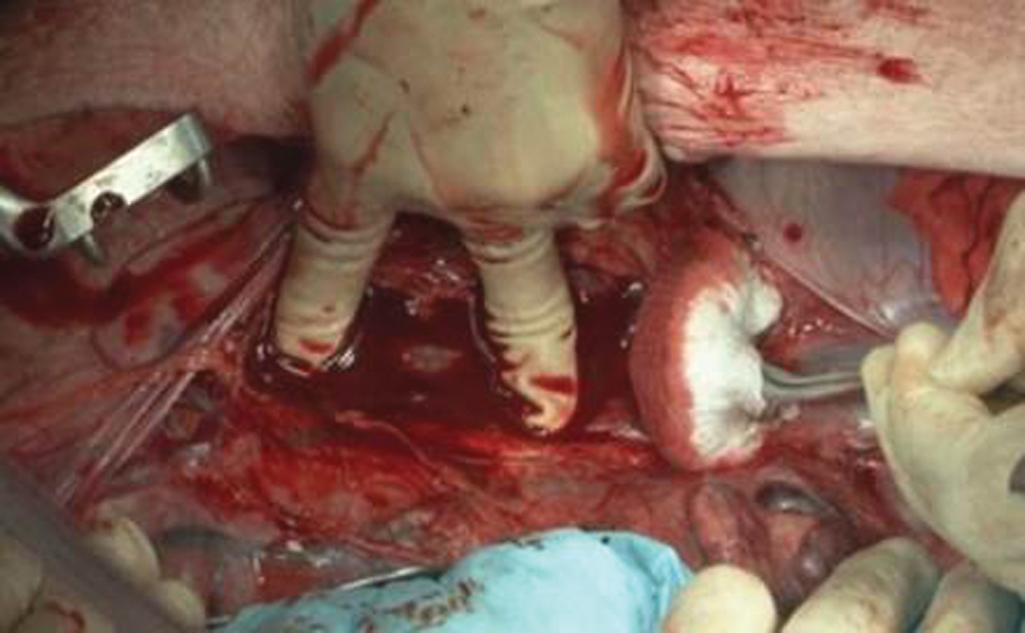

In ATOM, relevant decision-making doctrines are personally transmitted from instructor to trainee in a 1:1 or less usually a 1:2 faculty-to-student ratio, and comprehensive patient management decisions and team leadership are not required. Scenarios are straightforward and simple. The ability of the trainees to do each operation, with or without assistance, is subjectively judged by an instructor during the procedure (using a 3-point Likert scale), with immediate feedback. There is no rigorous psychomotor testing within scenarios. Cognitive skills are judged by a multiple-choice examination. Efficacy is self-assessed. ATOM has many qualities of an ideal, short course and was the first such course to actively engage educational (nonsurgeon) experts in the design. However, the injuries covered in this course are generally not relevant to combat wounding scenarios and do not include operative interventions involving the head, face, neck, and extremities due to the anatomic limitations of the porcine model.
The Definitive Surgical Trauma Skills course, administered by the Royal College of Surgeons of England, and the Definitive Surgical Trauma Care course, administered by the International Association of Trauma and Surgical Intensive Care, are standardized, curriculum-driven, simulation-based courses intended to teach qualified surgeons and advanced surgical trainees strategic thinking and decision making in the management of severely injured patients and to provide them with practical surgical skills to manage major organ injuries in all areas of the body. Taught by experienced trauma-trained surgeons, these are intensive 2- to 3-day courses comprising lectures, interactive case discussions, and laboratory-based surgical skills training. The surgical lab is variably comprised of cadaver (Definitive Surgical Trauma Skills), animal (pig or goat), or both animal and cadaver models (Definitive Surgical Trauma Care), depending on the local availability, and cultural sensitivities regarding the use of each model. As with ATOM, there is no rigorous, scenario-based, psychomotor testing. While uniformly highly rated by trainees, the efficacy of these courses and transfer of skills to practice cannot be known.
The most recent and ambitious addition to the standardized, curriculum-driven, simulation-based short courses intended to supplement experience with open, trauma-relevant procedures is the ASSET course. This 1-day course developed by the American College of Surgeons Committee on Trauma in conjunction with the Uniformed Services University of the Health Sciences, utilizes a fresh cadaver model to teach numerous skills required for the care of the traumatically injured patient, using a faculty-to-student ratio of 1:4.
The ASSET course is done entirely in the lab as a scenario-based curriculum in which a case relevant to the area of dissection/exposure is presented with interactive discussion of the appropriate management and procedural steps, followed by slides of relevant anatomical considerations, and a brief video demonstrating the standard, after which the students are asked to replicate the skill in a time-pressured fashion. The ASSET course trains a large array of vascular exposure and control procedures for all major vessels in the extremities, neck, chest, abdomen, and pelvis as well as fasciotomy procedures for the upper and lower extremities. Techniques for intravascular shunting and damage control management of many thoracic and abdominal visceral and vascular injuries are presented in the curriculum. The nature of the cadaveric simulator requires that the operations are practiced without the hemorrhagic tissue destruction or distortion associated with actual major injuries.
The course is accompanied by a well-illustrated, well-designed, standardized, multimedia curriculum presentation ( Figs. 3 and 4 ), a manual, and a DVD containing the videos of the procedures taught in the course. Taught by a cadre of experienced trauma surgeons, the standardized curriculum is augmented by personalized instruction and tips and tricks at the tables. Since the course is designed to be taken by surgeons, significant trainee operative skill is assumed. Standard surgical instruments and a scrub technician are provided for the use of the trainees.
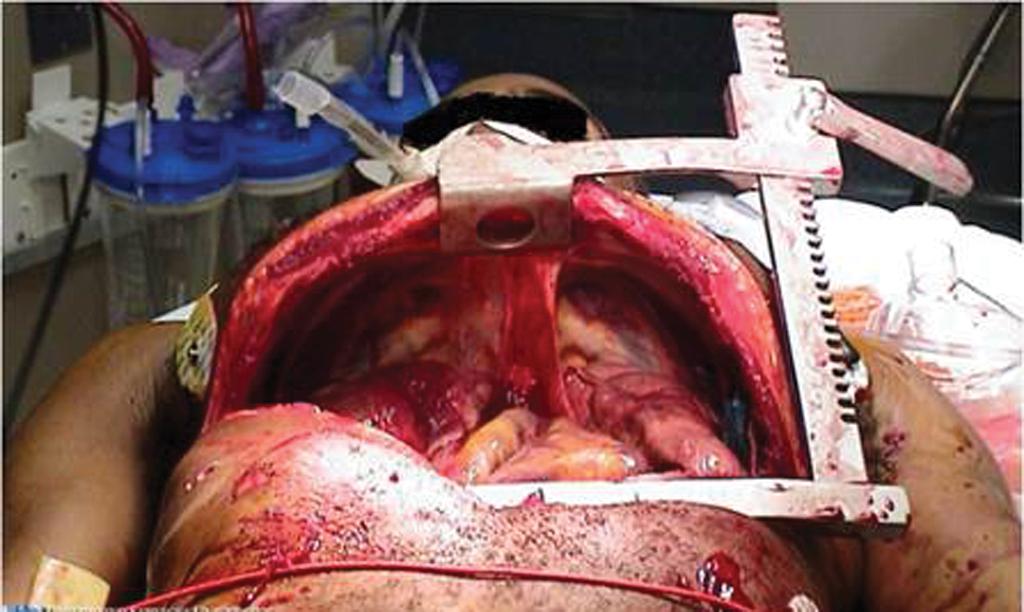
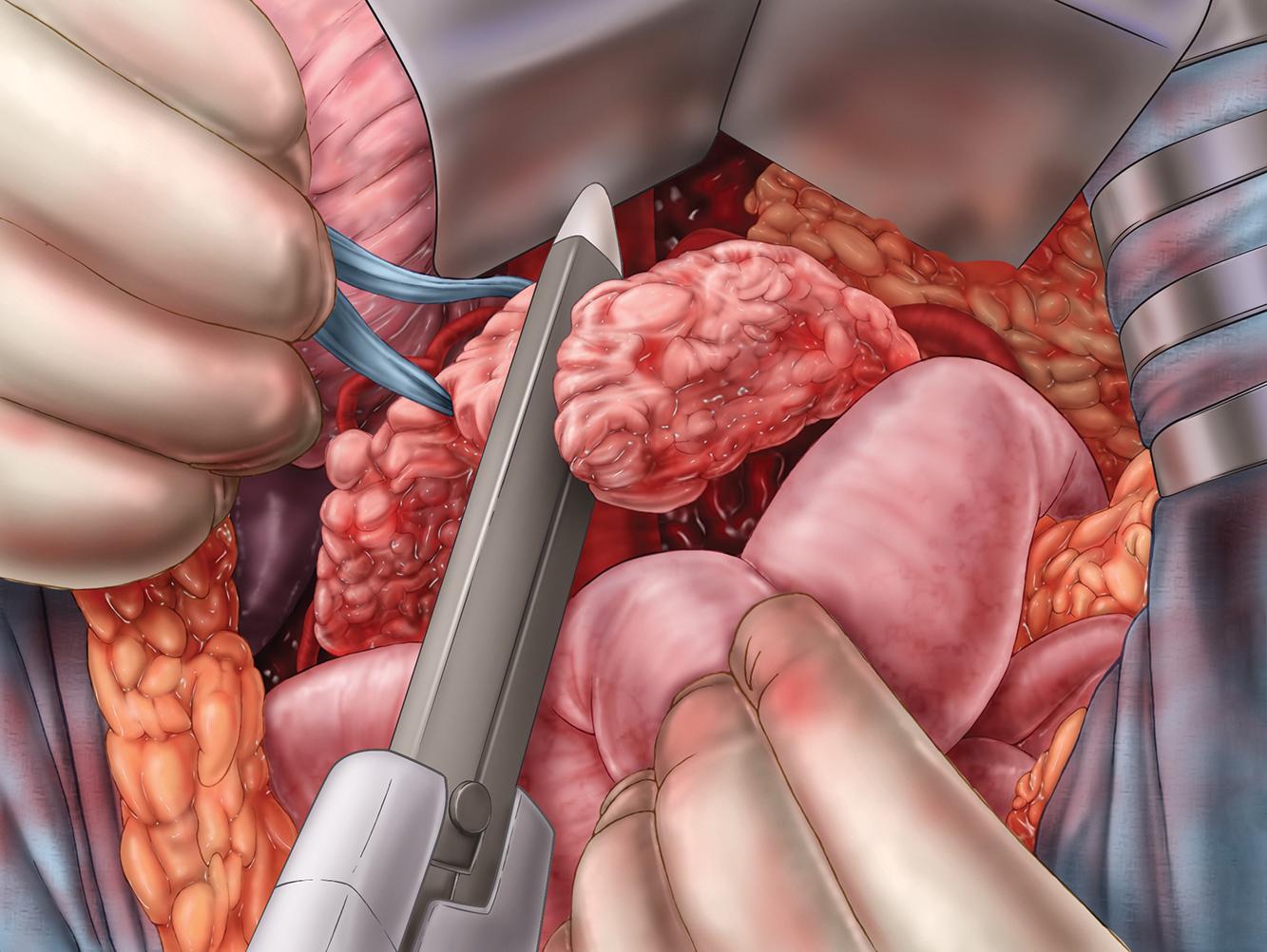
This excellent course has certain limitations, which are related to both the circumscribed training time afforded by the use of an unpreserved cadaver as the training simulator and the very ambitious curriculum. Opportunities for repeated, deliberate practice of surgical maneuvers are restricted, and the quality of cadaveric specimens is highly variable. The use of a cadaver model means that tissues cut during the various surgical maneuvers cannot be replaced or reset for a subsequent trainee to practice the same maneuver, and the fresh cadaver model, while undoubtedly offering the highest anatomic fidelity of any simulator, presents several additional problems. A special facility is required for the training. The unwounded cadavers tend not to have the habitus of healthy young military personnel, may have had prior surgeries making some exposures difficult, and carry the risk of communicating infectious diseases. Moreover, their rapid decay and accompanying odor limit the time the simulator can plausibly support surgical training. This last-mentioned limitation is very significant. It circumscribes the time that can be spent on teaching, practicing, and testing each of the numerous procedures presented in the ASSET course. A final limitation is that the faculty-to-student ratio of 1:4 does not allow for all students to demonstrate their ability to do every procedure in the course and the ability to evaluate the students for proficiency is limited.
Under the leadership of the Department of Surgery at the Uniformed Services University, there has been an ongoing effort to improve predeployment training for expeditionary surgeons. It was recognized that the existing predeployment and civilian trauma training curricula suffer from lack of standardization and low faculty-to-student ratios and do not provide meaningful assessment of whether the participants have mastered the skills necessary to care for combat casualties. Using the original ASSET course as a template and lesson learned from other surgical skills curricula, the course has been expanded to include a number of traditionally subspecialty skills required of expeditionary surgeons to save life, limb, and eyesight. The ASSET manual has been extensively revised and expanded adding 10 additional chapters and much more detailed images and illustrations ( Figs. 5–8 ). Additional skills covered in the ASSET Plus course include instruction in resuscitative endovascular occlusion of the aorta, vascular shunting, craniectomy, escharotomy, canthotomy and cantholysis, damage control orthopedic procedures, extremity amputations, and emergency obstetrical surgery, utilizing high-fidelity simulators when needed ( Fig. 9 A–D).
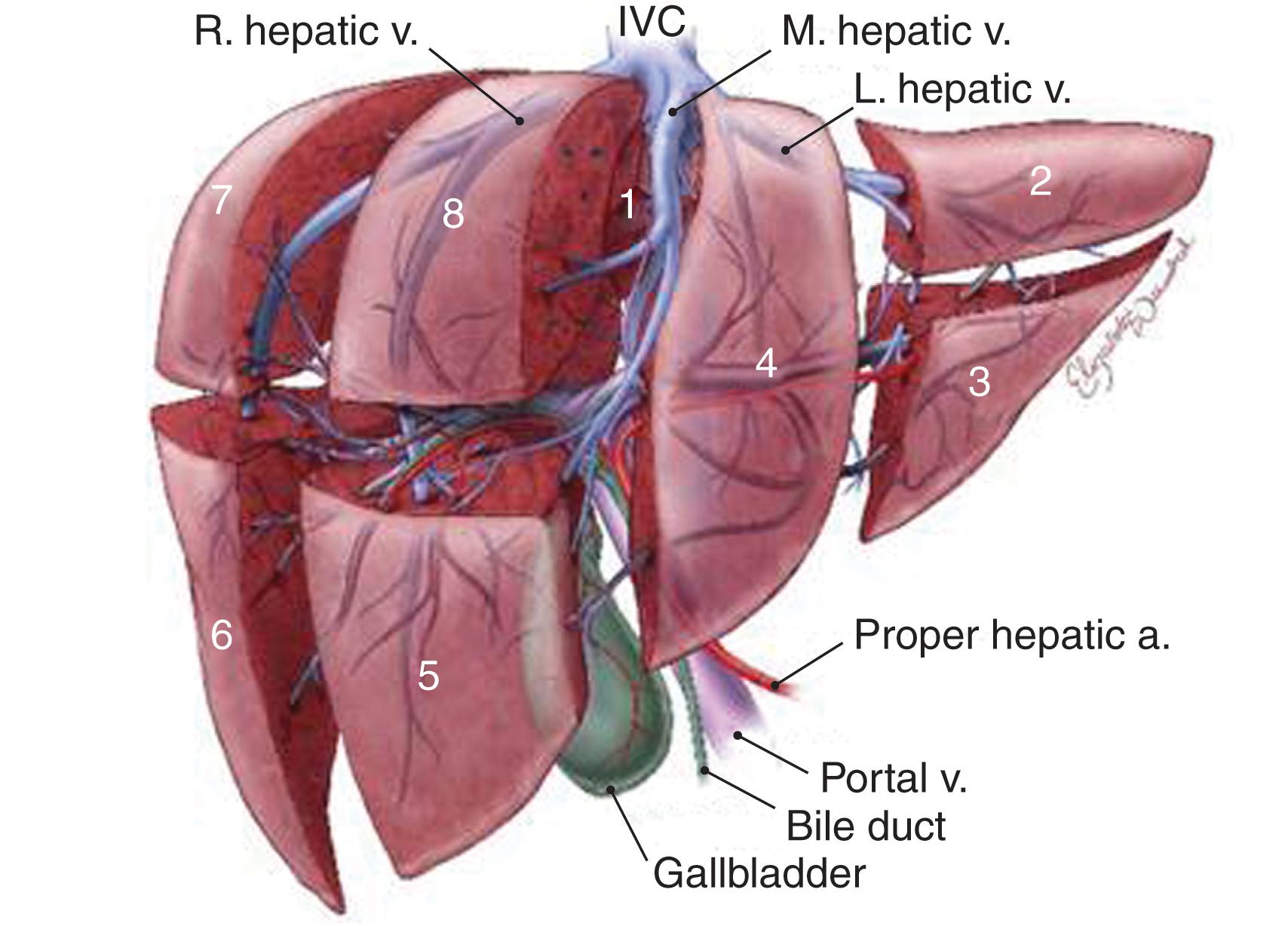
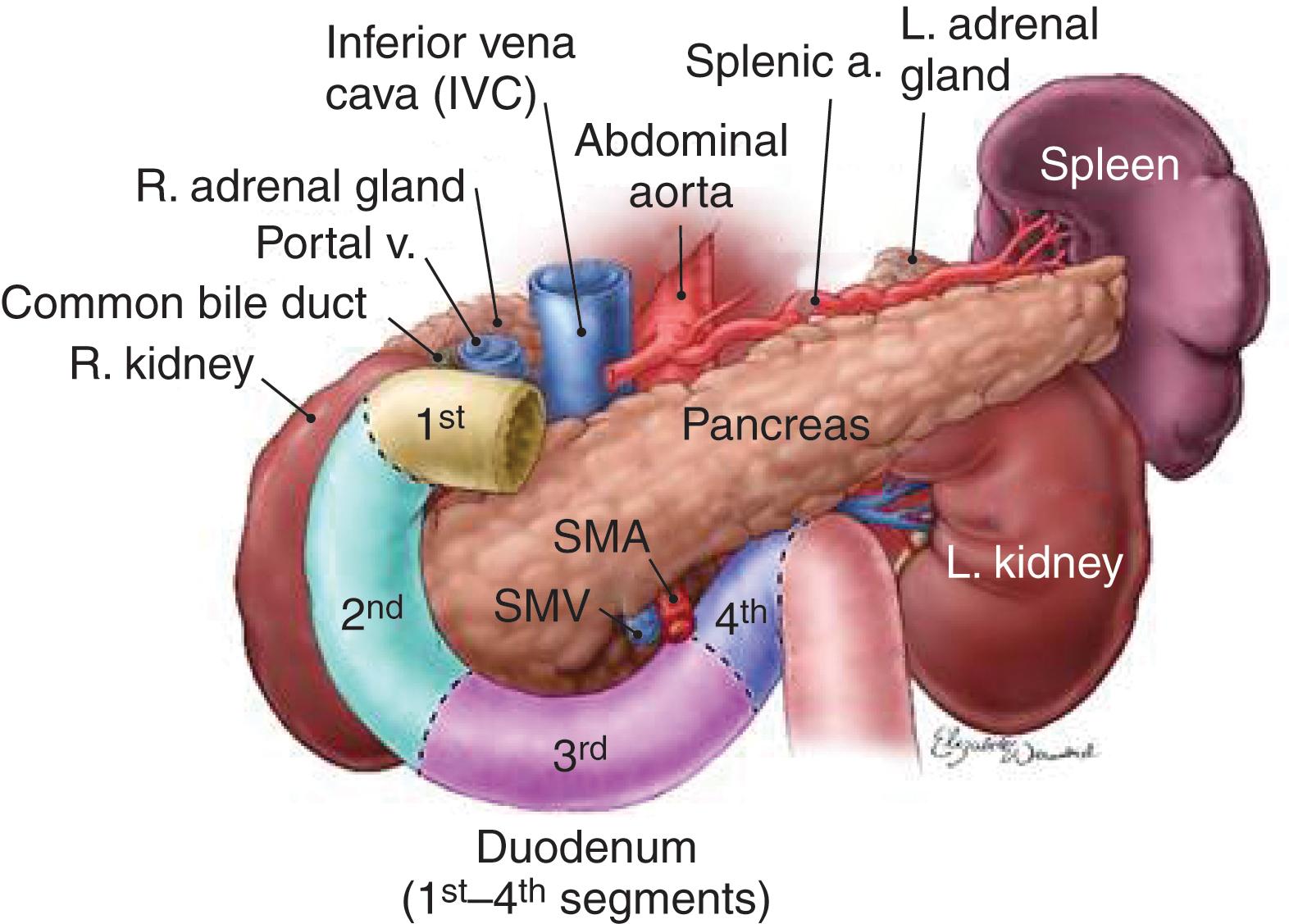
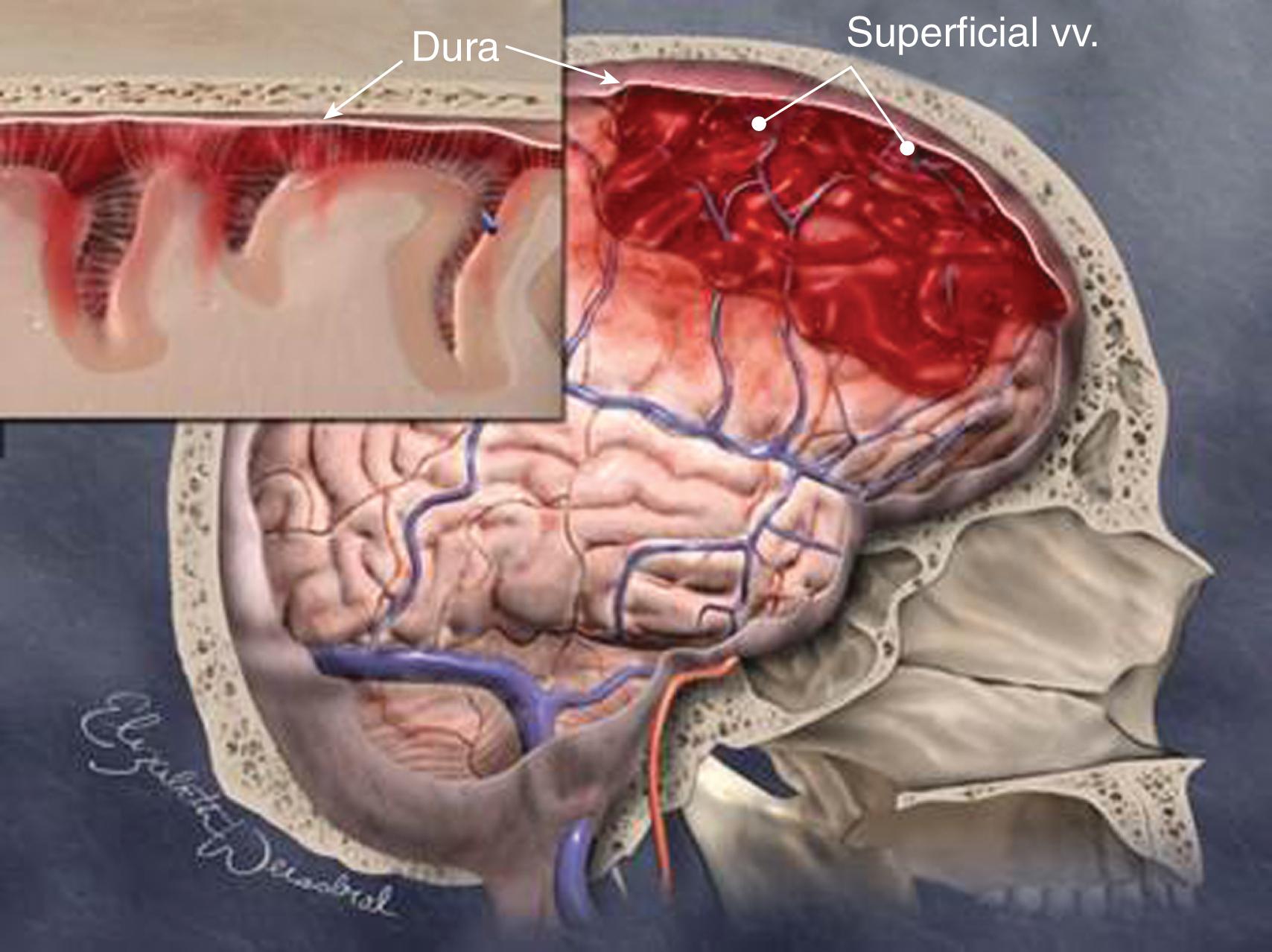
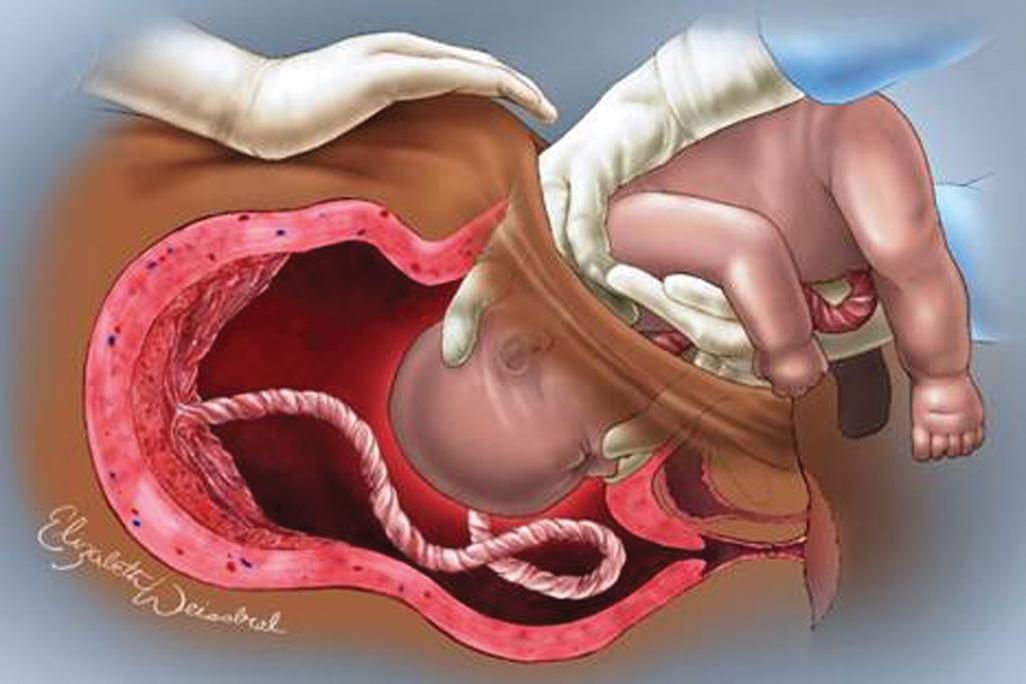
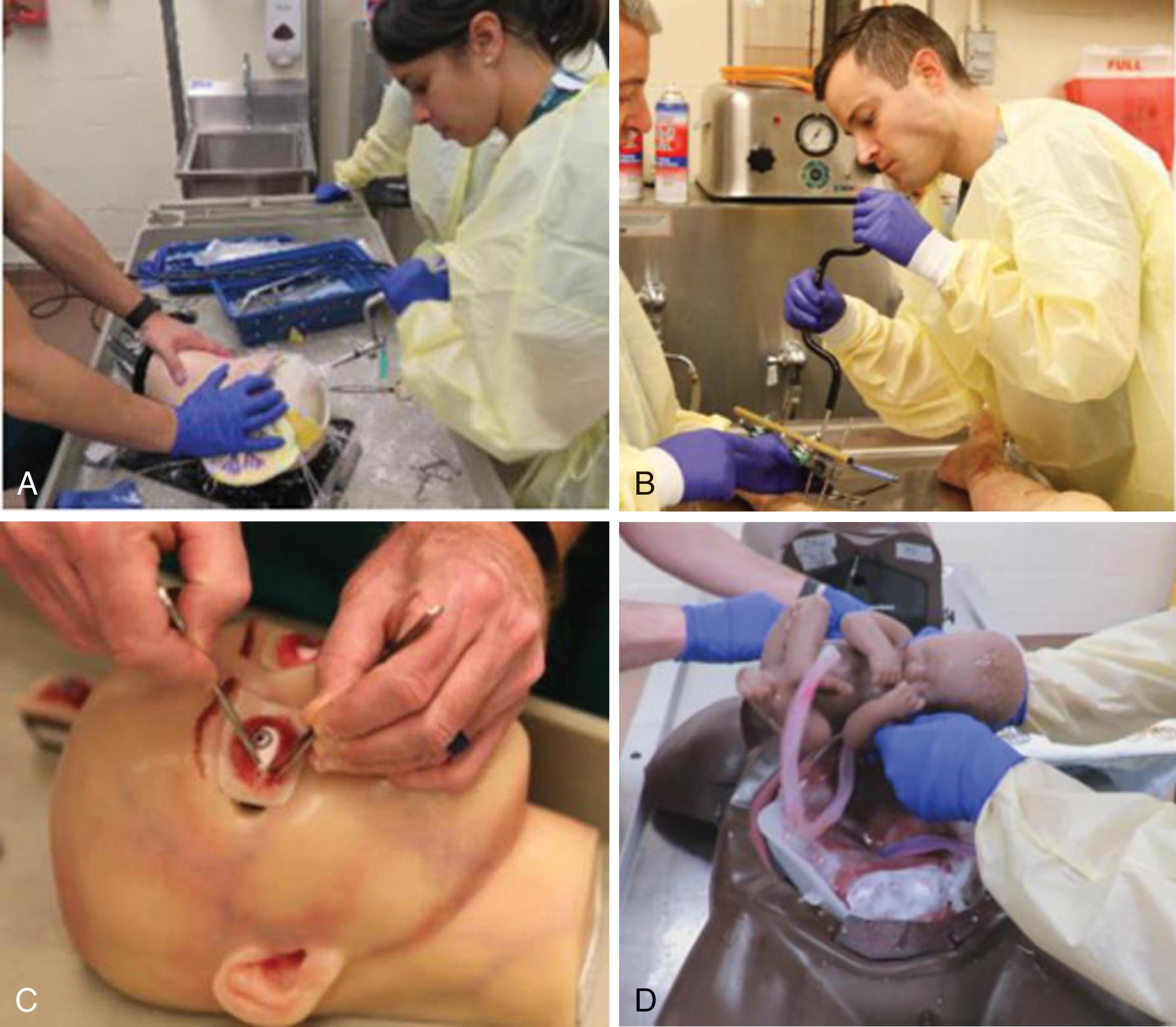
Initially fielded in 2019, the ASSET Plus course is a capabilities gap-directed, validated, rigidly standardized, subject matter expert consensus-driven skills course that utilizes best in class educational principles to teach and robustly assess life-, limb-, and eyesight-saving procedures using a selectively perfused fresh cadaver model and procedure-specific simulators. Over a 2-day curriculum, participants receive hands-on training in a one-to-one fashion by four experienced trauma surgeons and selected subspecialists, who provide real-time assessment and individualized feedback using a psychometrically validated, real-time, tablet-based assessment tool in which the participants are graded to the standard expected of a trauma “expert.” The educational design is such that the first day is a formative day during which the participants perform the skills guided by an experienced trauma surgeon who provides procedure-specific feedback following each procedure. The participants rotate to a second table/faculty in the afternoon, allowing for exposure to variable anatomy and for assessment and feedback by a second experienced trauma surgeon. On the second day of the course the students are given a new fresh cadaver and are asked to repeat the majority of the skills done on day 1 in a summative fashion while being assessed to a trauma expert standard by two experienced trauma surgeon faculty who they did not work with on day 1.
This curricular design of ASSET Plus is a significant paradigm shift over existing courses in that it is designed so that each student does and is assessed to a trauma expert standard on every procedure taught in the course. For the procedures that can be done bilaterally on a cadaver, they will do each procedure twice (once in a formative fashion and once in a summative fashion), and for those that can be done only once (e.g., thoracotomy), students will do once and assist once. This educational design allows for immediate reinforcement and replication of the procedures learned on day 1, and by virtue of having four separate experienced trauma surgeons evaluate each student to a standard, allows better identification of individuals who may need additional training. The robust assessment tool also allows identification of specific gaps in performance that can be remediated. Initial experience with the first 10 of these courses has demonstrated significant improvements in participants’ knowledge, skills, and confidence to handle injuries likely to be seen in the expeditionary environment. Additionally, we have been able to identify those surgeons who need skills remediation. Based upon these results, the Department of Defense will soon be replacing the existing EWSC with the ASSET Plus course as a funded and rigidly mandated predeployment course required of all military surgeons that must be repeated every 2 years.
This tremendous breadth of operations makes ASSET, and especially ASSET Plus, superior to any other short course for familiarizing trauma-naïve surgeons with open surgical procedures that might be required of a combat surgeon. Nonetheless, it is perhaps unrealistic to expect that a 2-day course can fully enable the competent practice of such a vast spectrum of operations by trauma-naïve practitioners, much less provide them with the full breadth of the knowledge and judgment needed for the management of critically injured casualties. The ability to translate skills learned in these courses into improved outcomes in the care of combat casualties is uncertain but certainly could provide a potential enhancement to the capabilities of trauma-naïve, general, or subspecialty surgeons.
Become a Clinical Tree membership for Full access and enjoy Unlimited articles
If you are a member. Log in here